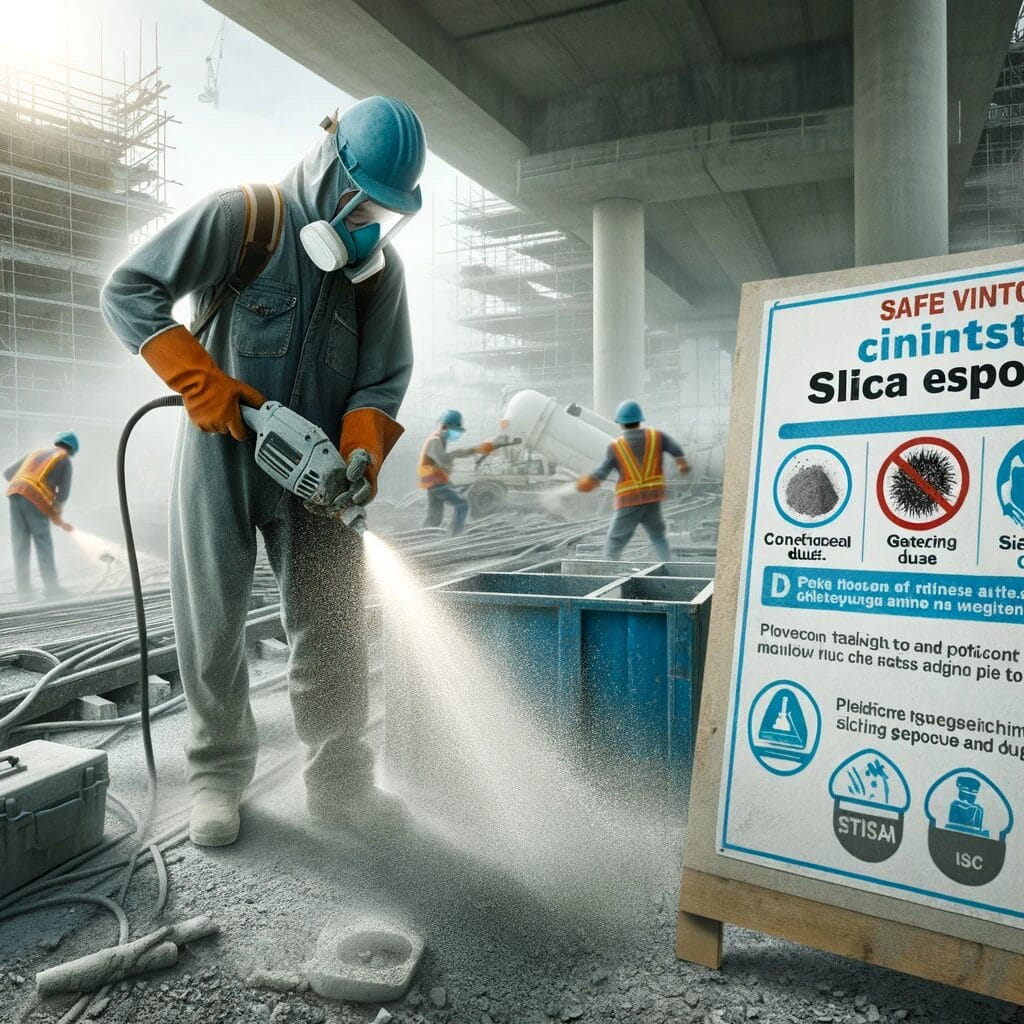Introduction
As an experienced health and safety professional, I recognise the importance of maintaining a safe and healthy working environment, particularly when dealing with hazardous materials like silica. In Australia, silica exposure remains a significant health risk in various industries, making awareness and management of this risk crucial for workplace safety. This article aims to provide an in-depth understanding of silica exposure, its implications, and effective strategies for managing this risk in Australian workplaces.
Understanding Silica and Its Risks
Silica, or silicon dioxide, is a naturally occurring mineral found in the Earth’s crust. It’s commonly present in materials such as sand, stone, and concrete. When these materials are cut, drilled, or ground, they produce a fine dust known as respirable crystalline silica (RCS), which poses significant health risks when inhaled, particularly in the context of silica exposure.
Inhalation of RCS can lead to a range of respiratory illnesses, most notably silicosis – a debilitating and potentially fatal lung disease. Additionally, exposure to silica dust has been linked to other serious health conditions, including lung cancer, chronic obstructive pulmonary disease (COPD), and kidney disease.
Regulatory Framework in Australia for Silica Exposure
In Australia, workplace health and safety regulations, overseen by Safe Work Australia, set stringent guidelines for managing silica exposure. These regulations require employers to conduct risk assessments, implement control measures, and ensure regular health surveillance for workers exposed to silica dust.
Risk Assessment and Exposure Control for Silica
Conducting a thorough risk assessment is the first step in managing silica exposure. This involves identifying tasks that generate silica dust, assessing the exposure level, and determining the potential health risks to workers.
Once risks are identified, implementing effective control measures for silica exposure is essential. These can include engineering controls such as local exhaust ventilation, wet methods to suppress dust, and substituting materials with lower silica content. Personal protective equipment (PPE) like respirators should be used as a last line of defence after all other control measures have been considered.
Training and Awareness about Silica Exposure
Training and awareness are critical components of silica exposure management. Workers and supervisors should be educated on the risks associated with silica dust, safe work practices, and the proper use of control measures and PPE.
Health Surveillance for Silica Exposure
Regular health surveillance of workers exposed to silica dust is vital. This includes baseline and periodic health assessments to monitor any changes in respiratory health and early detection of silica-related diseases.
Creating a Culture of Safety around Silica Exposure
Fostering a culture of safety is essential in effectively managing silica exposure. This involves leadership commitment, worker involvement, and continuous improvement of safety practices.
Conclusion
Managing silica exposure in the workplace requires a comprehensive approach, including understanding the risks, implementing effective control measures, training and awareness, health surveillance, and fostering a culture of safety. By adhering to these principles, Australian workplaces can significantly reduce the health risks associated with silica exposure.
If you would like to know more or would like our assistance in the areas mentioned check us out at www.intrinsicsafety.com.au. Alternately, call us on 1300 990 336 or email us at in**@*****************om.au


